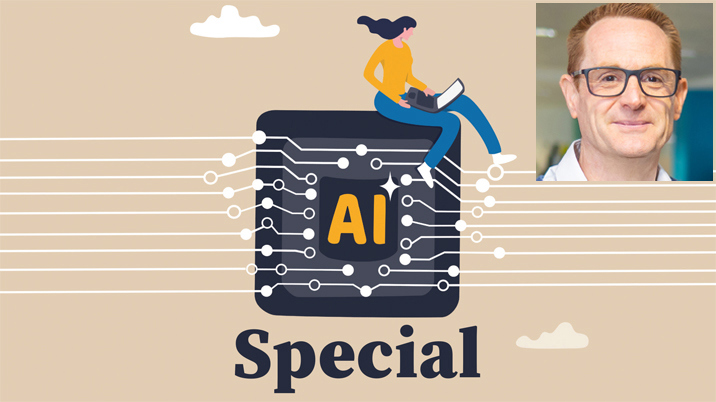
Q: How is emap using AI now?
A: emap has launched large language model (LLM) search on two websites, www.nursingtimes.net and www.lgcplus.com. We are using AI powered search to provide answers to questions solely based on our trusted and expert content. It is a private AI model. We are not making our content openly available, and it is not being used to train an LLM. We have integrated AI fully into the sites, the customer experience remains with the trusted brand.
The Ask Nursing Times and Ask Local Government Chronicle services are allowing our customers to discover and use our content in a way that has never been possible before. The AI is doing the hard work of finding exactly the content the customer needs. The content is presented in a far more engaging and useful way.
Customers can ask their own questions. AI generated questions are inserted into all articles to encourage users to explore topics further.
Customers get a summary answer to their questions, with cited links to the articles the AI based the reply on. The AI engine suggests related questions to explore and links to articles for the customer to go beyond and learn more about the topic.
We are using AI to offer a premium content service to attract new customers and improve the loyalty and value of existing customers. We are offering a different experience to different customers to encourage them up the value chain. The more valuable the user is to us, the more value we offer.
Anonymous visitors can see the answers to the AI automatically generated questions. Registered users can ask a limited number of their own questions. Subscribers can ask as many of their own questions as they want.
Adding LLM search has transformed our sites into a vast archive of everything a customer would ever want to know about a sector, past and present. It is allowing customers to find deep information. That is a step change to the traditional prioritisation of the surface layer of the most recent content.
Q: How do you expect your company to use AI in the future?
A: By the summer, we expect to have launched the service on five further websites.
The speed of development of the technology is remarkable. Major improvements to the Ask service are already planned in the coming months.
There will be new versions of the automatically generated questions inserted into the articles. There will be different question modules for different article types. The AI is learning what the right number and type of questions are at an article level.
Detailed briefings are likely to replace the summary answers. The service will offer an expanded answer, going much deeper into the topic.
We are expecting to be able to offer a smart AI powered alerts service, akin to a constantly searching research analyst. Customers will be automatically notified when a question they have asked has a new or updated answer from new content. AI will allow us to offer our customers an automatic keep-up-to-date service.
We are currently offering customers traditional search and LLM AI search. We are likely to move to AI search only once users have become more familiar with it. AI search really works. Many publishers will be all too familiar with the limitations of their current site search.
When we have an exceptional AI powered personalised customer service layer of briefings and alerts, use of that service may become a premium myNursing Times or myLocal Government Chronicle product, generating new subscriptions revenue.
In the coming weeks, we will launch our second new AI powered product for our subscribers. We are working with a partner to acquire, analyse and present publicly available data for the construction industry. Our customers will have access to a constantly updated interactive dashboard allowing them to interrogate data on construction materials; industry output; workforce and companies. An AI engine will be used to spot anomalies or changing trends in the data, we can then analyse and report on.
Three top tips
- When first considering the opportunities AI might bring, we kept firmly in mind the words of Steve Jobs in 1997, “You have to start with the customer experience and work backwards to the technology. What incredible benefits can we give to the customer, where can we take the customer. Don’t sit down with the engineers and try to figure out what awesome technology you have.”
- I would recommend encouraging a growth mindset for everyone trying to figure out the AI opportunity. You don’t have to be an expert, set the goal of knowing more this month than last, experiment and iterate. Build it, measure it and learn from it. Be intentionally inclusive, this is a collective effort for all to work on.
- AI isn’t an out-of-the-box technology. It requires considerable input before and after going live. Each site has been a custom implementation. It is a very fluid and dynamic process.
Robin and the other contributors to our AI Special took part in an ‘AI Special – Q&A’ webinar on Wednesday, 26 June. You can watch the recording by registering here.
This article was included in the AI Special, published by InPublishing in June 2024. Click here to see the other articles in this special feature.












